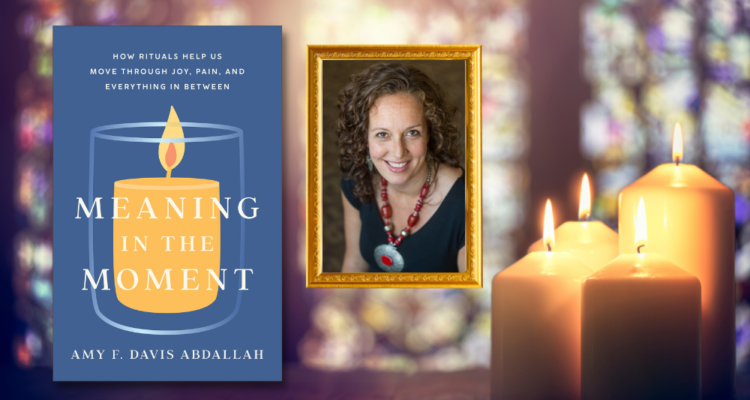Ritual Acts
Our bodies are not passive in rituals; they are active, and that increases the transforming power of rituals. In my sabbatical-ending ritual, I used physical things in a smaller, manageable system (candles on a table) to act out what was occurring in my larger, less manageable life: a transition from sabbatical to teaching. Scientists have found that as we watch someone else act, mirror neurons in our brains fire as though they are doing the same action we see. This comes close to what occurred for me as I blew out candles to embody letting go of cherished sabbatical elements. Blowing out the candles mysteriously and yet completely freed me to let go of my sabbatical and to transition well into teaching. The bodily acting out, the embodiment, transformed me beyond the small candles that I extinguished.
Active learning is a key concept in education these days. We do not learn primarily by listening to a lecture. We learn best through action, perhaps by giving an active response to a lecture or delivering our own lecture. Here’s a family example of the limitations of verbal instruction: We told our son not to use a razor on his face like Daddy does. I am fairly certain, however, that the lesson was cemented when he did use it and cut his lip. I am not saying that everyone must do what our elders warn us against in order to learn, but I am suggesting that physical action sears things into our minds more quickly and permanently than listening to speech does. That is why the action of rituals undergirds the mystery of their transformative power.
Brides walk down aisles and are sometimes accompanied by a parent or parents. Both brides and grooms put a ring on the other’s finger. Graduates walk (or sometimes dance) across stages and shake the president’s hand. Pallbearers carry the casket to the hearse and then to the grave; all watch and deeply experience the lowering of the casket into the ground. Parents cut the gender-reveal cake and joyfully display a piece. We act.
When Grimes studies ritual, he begins with action. He takes “actions to be the living, throbbing heart of the matter,” and he assumes that “objects and places facilitate rather than constitute what they do.” He even prefers the term “enact” because it suggests putting into force, as in enacting legislation. The enactment does something mysteriously.
In the Crossing Over Ceremony, women act in multiple ways to express their understanding of Christian womanhood. They dance, do yoga, recite spoken word, sing, play an instrument, or describe an art project they created. That action cements their learning, and then we place around their neck a necklace bearing the program’s symbol. We act and in so doing enact womanhood.
Leviticus 16 carefully describes the actions to be taken on the Day of Atonement. Aaron bathes, puts on sacred clothing, and gets the animals. After slaughtering the bull for his own sin offering, he makes the incense really smoky, like a shield between him and the atonement cover that lies on top of the ark in the most holy place, and sprinkles some of the bull’s blood there. He then casts lots for the two goats; one goes to the Lord, and the other is the scapegoat. Aaron slaughters the Lord’s goat and sprinkles its blood in the same way he did with the bull. The blood of both cleanses and consecrates the tent of meeting and the altar.
Aaron then takes the scapegoat, lays his hands on its head, and confesses all the sins of the Israelites, putting them on the goat’s head (Lev. 16:21). Someone takes that goat into the wilderness and lets it go, where it will die. Aaron takes off his clothes, bathes, comes out, and sacrifices rams, one for him and one for the people. The people fast and rest on this day. In this action, “before the Lord, [all Israelites] will be clean from all [their] sins” (Lev. 16:30). Aaron and the high priests who come after him are to act—and, in so doing, enact—cleansing for the most holy place, the holy place, themselves, and all the people.
Content taken from Meaning in the Moment by Amy F. Davis Abdallah, ©2023. Used by permission of Brazos Press.

